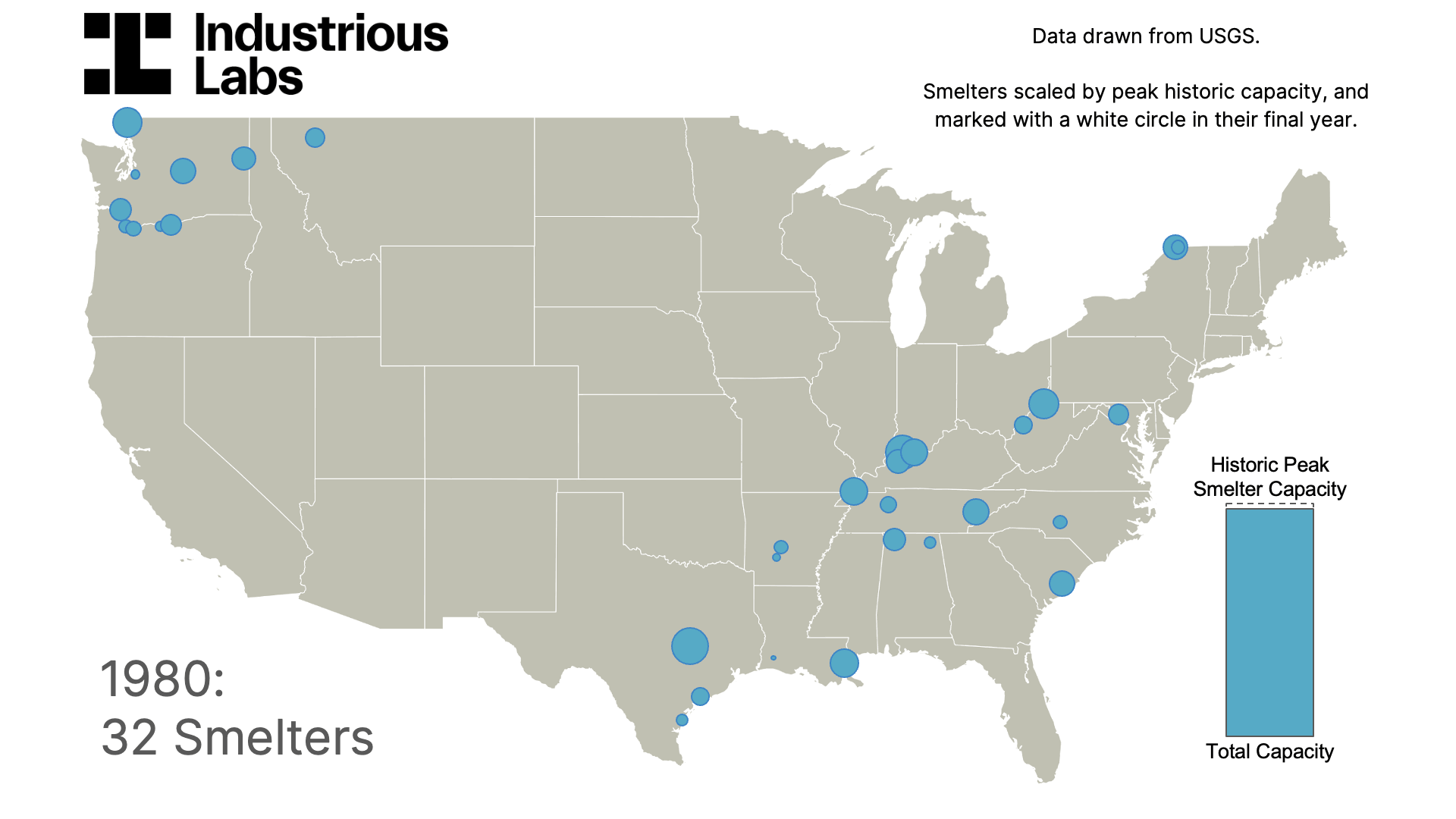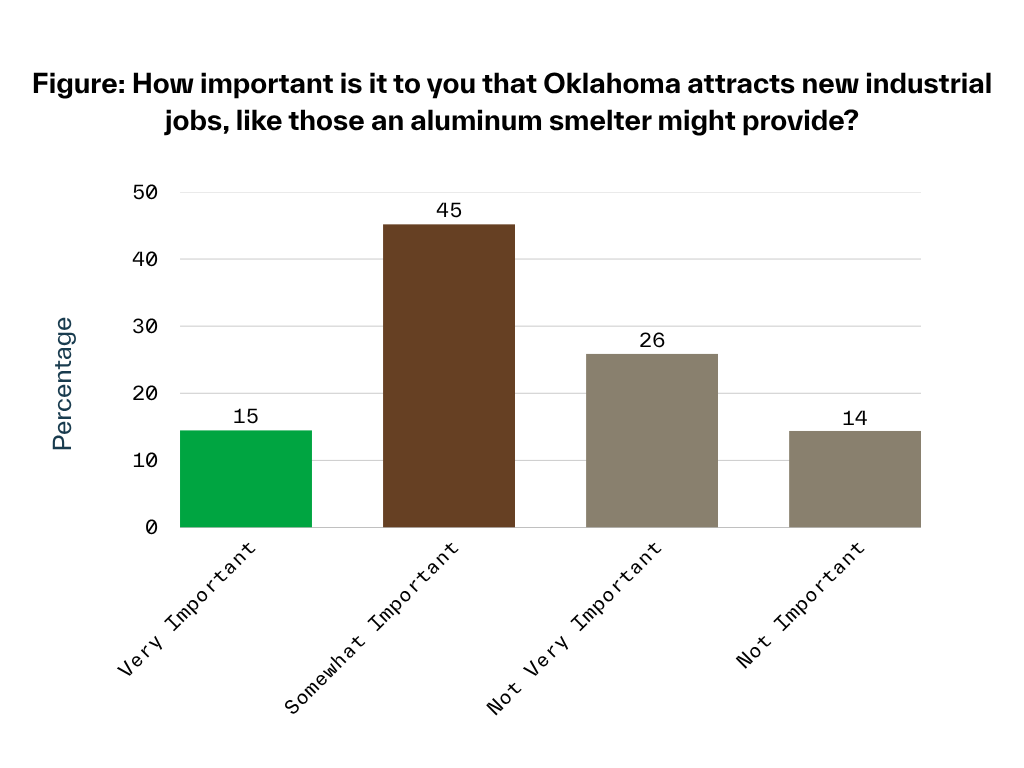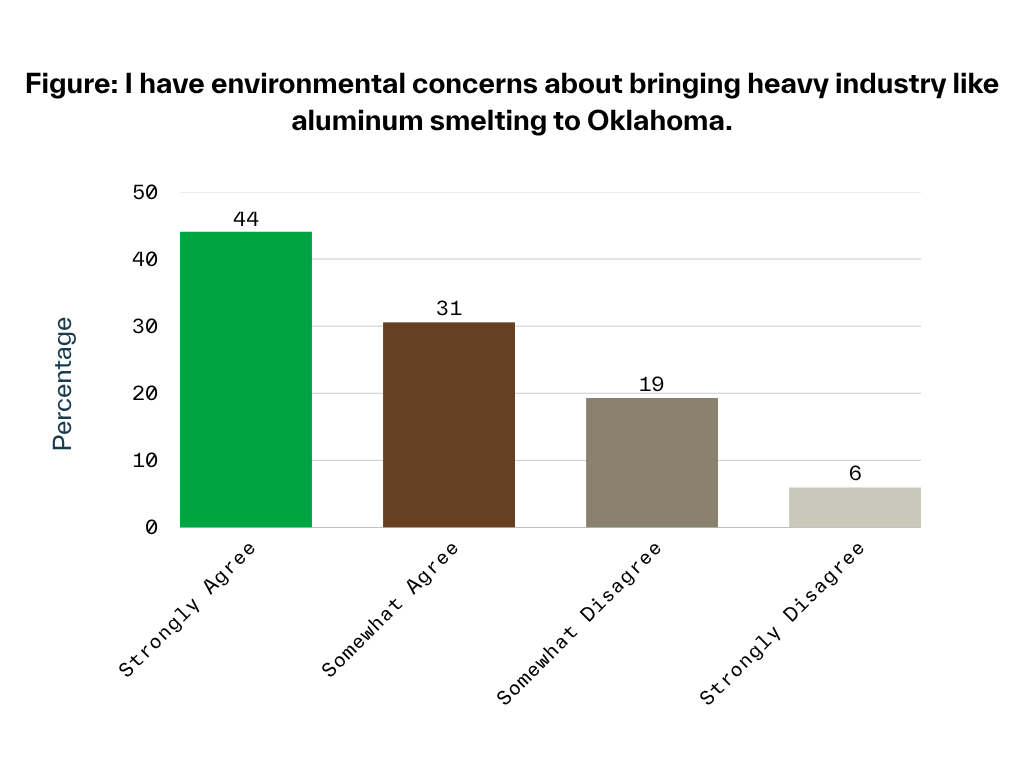Oklahoma’s bright future: What residents think of a landmark aluminum smelter
Emirates Global Aluminum announced plans earlier this year to build a primary aluminum smelter in Oklahoma, which would be the first new smelter in the U.S. in over 45 years. We conducted a statewide survey using Grow Progress to ask residents whether they support the buildout of a new smelter in their state — and why.
Annie Sartor, Aluminum Campaign Director, Industrious Labs

"Community sentiment is crucial in establishing new smelters and transitioning to modernized, clean, American manufacturing. This is why Industrious Labs, using the platform Grow Progress, conducted a representative statewide survey to gauge Oklahomans’ views on the prospect of this transformative facility."
Aluminum might be on the cusp of a historic revival, with Emirates Global Aluminum (EGA) announcing plans earlier this year to build a new primary aluminum smelter in Oklahoma. If built, this facility would be the first new smelter in the U.S. in over 45 years. Community sentiment is crucial in establishing new smelters and transitioning to modernized, clean, American manufacturing. This is why Industrious Labs, using the platform Grow Progress, conducted a representative statewide survey to gauge Oklahomans’ views on the prospect of this transformative facility. The survey found that more than half of respondents (62%) support the buildout of a new smelter in their state.
Why we launched this survey
For decades, U.S. aluminum manufacturing has faced steep decline. In the past three years alone, two smelters have curtailed operations and a third failed to restart. Today, just four primary aluminum smelters are operating across the country, despite surging demand and the nation’s historic position as one of the largest aluminum importers worldwide.

Timeline of U.S. primary aluminum smelters declining since 1980. New smelter location(s) have yet to be announced.
With EGA’s $4 billion investment poised to double U.S. output and create thousands of direct and indirect jobs, Oklahoma finds itself at the center of a new chapter in industrial progress. We designed this survey to capture resident perspectives on how such a project could reshape local economies, job prospects, and the state’s role in securing America's supply of critical minerals.
Eagerness for new jobs with cautious optimism
Survey responses revealed a sense of cautious optimism. Across age groups, geographic regions, political views, and racial backgrounds, residents expressed hope for job creation, infrastructure improvement, and renewed economic momentum. Many also voiced concerns — especially around environmental, health, pollution, or ecological impacts from such an energy-intensive industry. When we asked the people who oppose the smelter the reasoning behind their opposition, 22% mentioned the environment in their concerns. A few respondents expanded further on these ideas, saying they want reassurances that Oklahoma’s natural resources and communities will be protected and that the benefits will be broadly shared. This means that proponents of the smelter need to create messaging that assuages these concerns and informs this audience about how they will minimize pollution.
There is also a strong correlation between support for the buildout of the smelter and support for projects that bring jobs to their state. When we asked people who support the smelter being built what drives their support, 37% mentioned jobs. There could also be an opportunity here for proponents to describe how this smelter will boost jobs and the local economy. Notably, in the qualitative responses, nearly half of respondents did not know what an aluminum smelter was or were unaware of the project details.

Responses from those who “strongly support” or “somewhat support” a new smelter in Oklahoma, rating the question: “How important is it to you that Oklahoma attracts new industrial jobs, like those an aluminum smelter might provide?”
Energy and policy matter
A segment of survey respondents voiced concern about the potential fiscal implications for Oklahoma taxpayers and local electricity ratepayers: People who oppose the smelter are more likely to believe that the smelter will raise energy prices than people who support the smelter. Several individuals raised tax concerns — asking the critical question of who will bear the cost burden of a large operation like this smelter. Some also noted the excessive energy consumption and demand required and how electricity costs would impact their own utility costs. What’s clear from these responses is that the project is raising questions of how much it will cost the public. While the smelter can bring a number of benefits to the state of Oklahoma, families and businesses should not bear a disproportionate burden from industrial development.

Responses from those who “strongly oppose” or “somewhat oppose” a new smelter in Oklahoma, rating their concern level about the statement: “I have environmental concerns about bringing heavy industry like aluminum smelting to Oklahoma.”
Their voices underline the potential of EGA’s commitment and how important it is for this development to be accountable to residents’ needs, and, in particular, their concerns about the environment and health. As I shared in Inside Climate News, “While Emirates Global Aluminum’s announcement could be good news for U.S. industry, we’ll reserve judgment until we see whether this project commits to renewable power.” Historic trends show that clean, sustainable production is an important pathway for long-term viability of the aluminum industry. Century Aluminum’s proposed smelter, catalyzed by the Inflation Reduction Act and expected to be powered by renewable energy, offers a compelling model.
Primary aluminum smelting is one of the most electricity-dependent industries on Earth. Clean energy isn’t just a preference; it’s a requirement if we want to produce the low-carbon aluminum that transportation, packaging, and electricity sectors increasingly demand. Our recent report at Industrious Labs projects that U.S. aluminum demand could grow by up to 40% in the next decade. The question is not if Oklahoma can become a leader, but whether it can do so sustainably.
These survey results show that a key part of EGA’s success in Oklahoma will depend on its commitment to renewable, affordable energy and the preservation of incentives that make clean aluminum production viable. Two new smelters working to meet growing demand would be a game-changer, but only if they help America lead in low-carbon aluminum.
What’s next
As negotiations advance, Oklahoma stands to set the benchmark for a new future in American industry. Residents want jobs, opportunity, and pride in world-class manufacturing. At the same time, they demand environmental integrity and a fair share of prosperity.
EGA’s announcement is cause for excitement — particularly if this project commits to renewable power. And if the Trump administration is serious about reviving U.S. aluminum, the first step would be to preserve the incentives that Congress already passed that are helping make Century’s clean aluminum project viable.
Oklahoma’s residents indicate great potential. The state is ready for change — if industry leaders and policymakers listen and act responsibly. This is more than an investment; it’s an opportunity to build the future of U.S. aluminum.